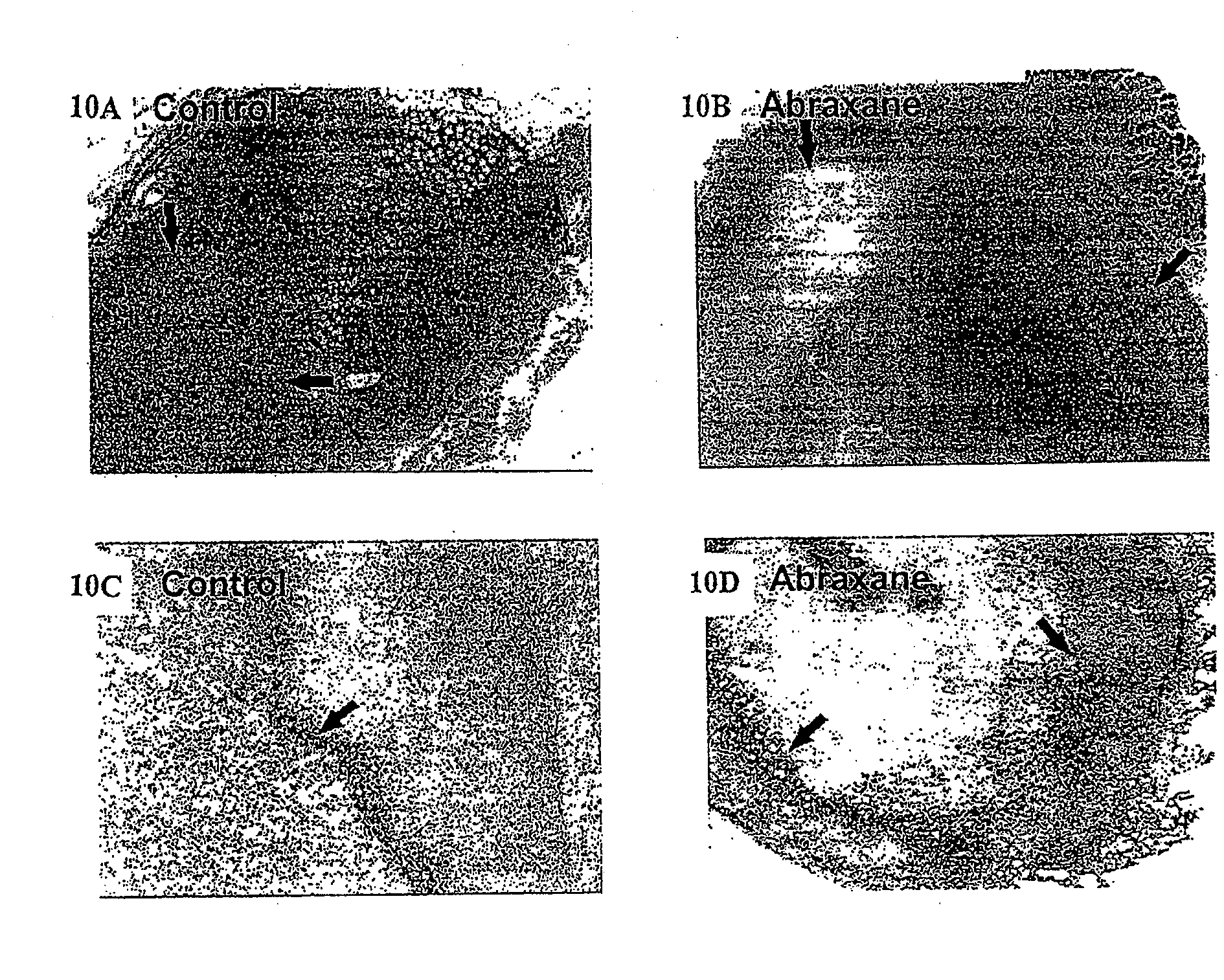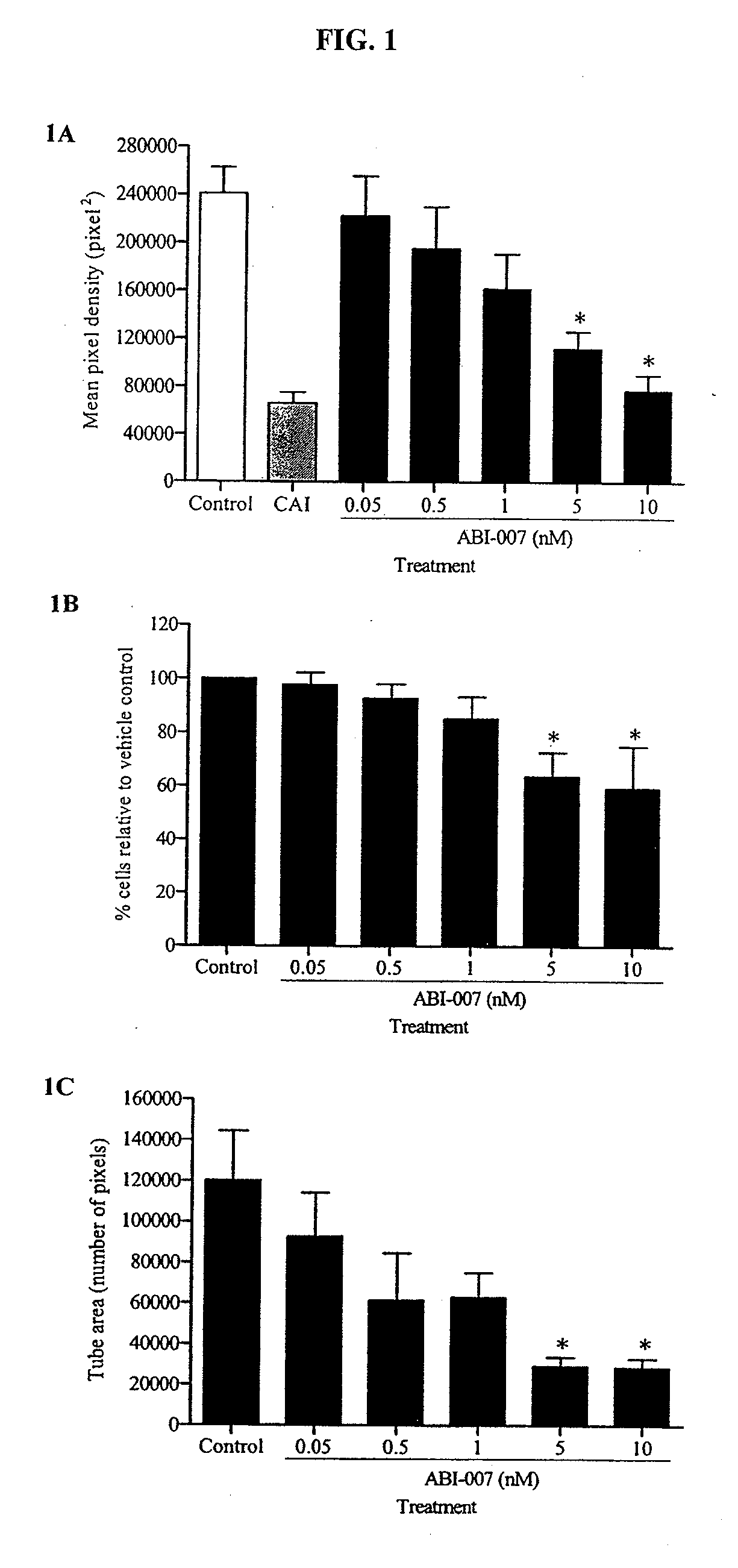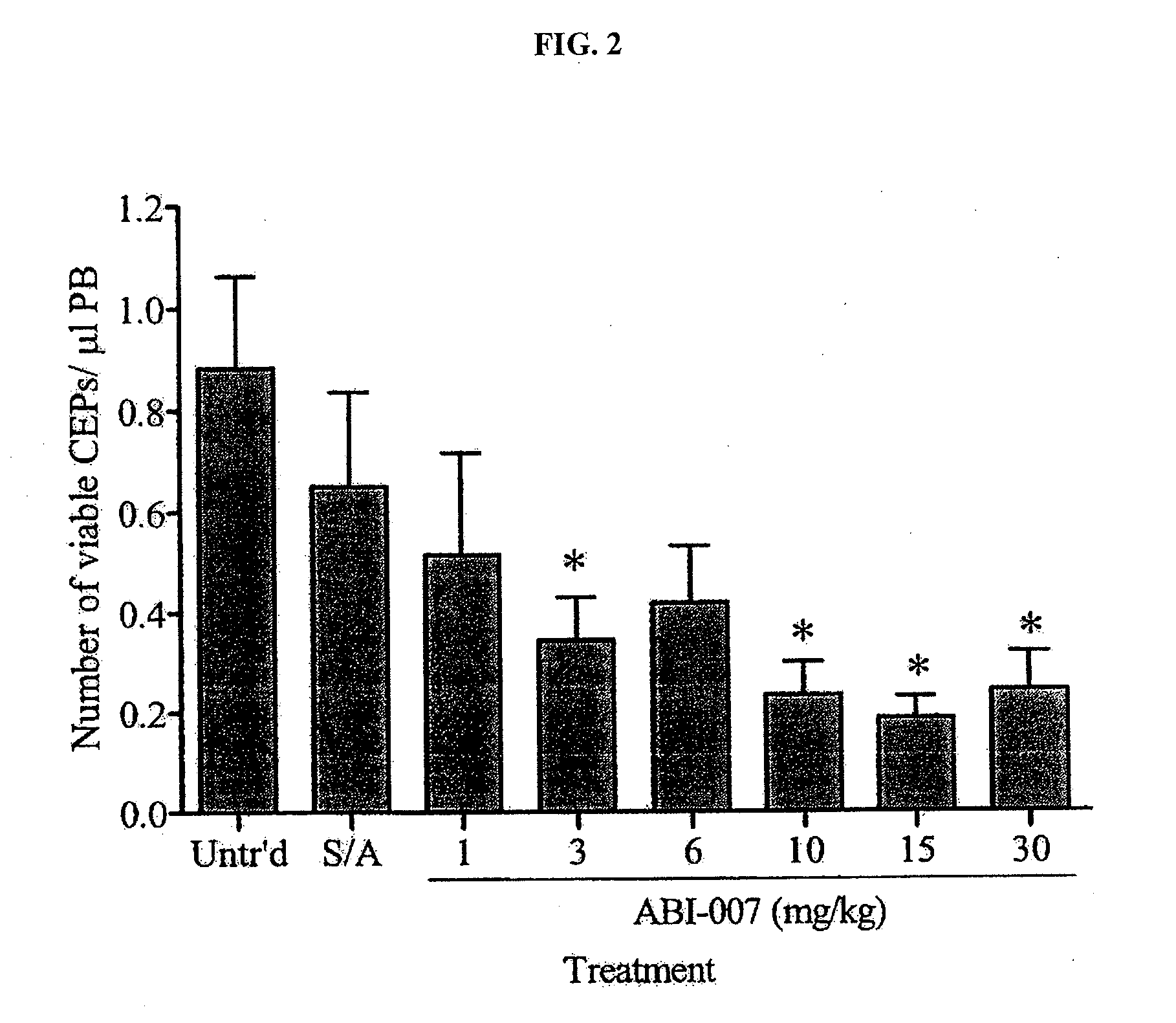Combinations and modes of administration of therapeutic agents and combination therapy
a combination therapy and therapy technology, applied in the field of proliferative diseases, can solve the problems of inaccessibility to surgeons, inability to treat tumors located in other areas, and inability to respond to drug and/or radiation therapy in a significant number of tumors,
- Summary
- Abstract
- Description
- Claims
- Application Information
AI Technical Summary
Benefits of technology
Problems solved by technology
Method used
Image
Examples
example 1
Improved Response and Reduced Toxicities for Abraxane® Compared to Taxol® in a Phase III Study of Abraxane® Given Every Three Weeks
[0237]Significantly reduced incidence of neutropenia and hypersensitivity, absence of requirement of steroid premedication, shorter duration of neuropathy, shorter infusion time and higher dose.
[0238]ABI-007 (Abraxane®), the first biologically interactive albumin-bound paclitaxel in a nanoparticle form, free of any solvent, was compared with Cremophor -based paclitaxel (Taxol™) in individuals with metastatic breast cancer (MBC). This phase III study was performed to confirm the preclinical studies demonstrating superior efficacy and reduced toxicity of ABI-007 when compared with Taxol®. Individuals were randomly assigned to 3-week cycles of either ABI-007 260 mg / m2 (iv) over 30 minutes without premedication (n=229) or Taxol® 175 mg / m2 IV over 3 hours with premedication (n=225). ABI-007 demonstrated significantly higher response rates compared with Taxol®...
example 2
Weekly Abraxane® in Taxane-Refractory Metastatic Breast Cancer Individuals
[0239]A recent Phase II clinical study showed that weekly administration of Abraxane® (nanoparticle albumin-bound paclitaxel) at a dose of 125 mg / m2 resulted in long-term disease control in individuals with metastatic breast cancer whose disease had progressed while being treated with Taxol® or Taxotere® (that is, individuals who are taxane-refractory).
[0240]Abraxane® is believed to represent the first biologically interactive composition that exploits the receptor-mediated (gp60) pathway found to be integral to achieving high intracellular tumor concentrations of the active ingredient—paclitaxel. The Phase II study included 75 individuals with taxane-refractory metastatic breast cancer. Abraxane® was administered weekly via a 30-minute infusion at 125 mg / m2 without steroid / antihistamine premedication or G-CSF prophylaxis. Individuals received three weekly doses followed by one week of rest, repeated every 28 ...
example 3
Abraxane® (ABI-007) Acts Synergistically with Targeted Antiangiogenic Pro-Apoptotic Peptides (HKP) in MDA-MB-435 Human Tumor Xenografts
[0248]The antiangiogenic activity of small synthetic pro-apoptotic peptides composed of two functional domains, one targeting the CD13 receptors (aminopeptidase N) on tumor microvessels and the other disrupting the mitochondrial membrane following internalization have previously been reported. See Nat. Med. 1999 September; 5(9):1032-8. A second generation dimeric peptide, CNGRC-GG-d(KLAKLAK)2, named HKP (Hunter Killer Peptide) was found to have improved antitumor activity. Since anti-angiogenic agents such as Avastin® exhibit synergism in combination with cytotoxic agents such as 5-fluorouracil, we evaluated the combination of the antiangiogenic HKP with Abraxane® (ABI-007), an albumin nanoparticle paclitaxel that is transported by the gp60 receptor in vascular endothelium (Desai, SABCS 2003), in MDA-MB-435 human breast tumor xenografts.
[0249]Methods...
PUM
| Property | Measurement | Unit |
|---|---|---|
| diameter | aaaaa | aaaaa |
| diameter | aaaaa | aaaaa |
| time | aaaaa | aaaaa |
Abstract
Description
Claims
Application Information
 Login to View More
Login to View More - R&D
- Intellectual Property
- Life Sciences
- Materials
- Tech Scout
- Unparalleled Data Quality
- Higher Quality Content
- 60% Fewer Hallucinations
Browse by: Latest US Patents, China's latest patents, Technical Efficacy Thesaurus, Application Domain, Technology Topic, Popular Technical Reports.
© 2025 PatSnap. All rights reserved.Legal|Privacy policy|Modern Slavery Act Transparency Statement|Sitemap|About US| Contact US: help@patsnap.com



